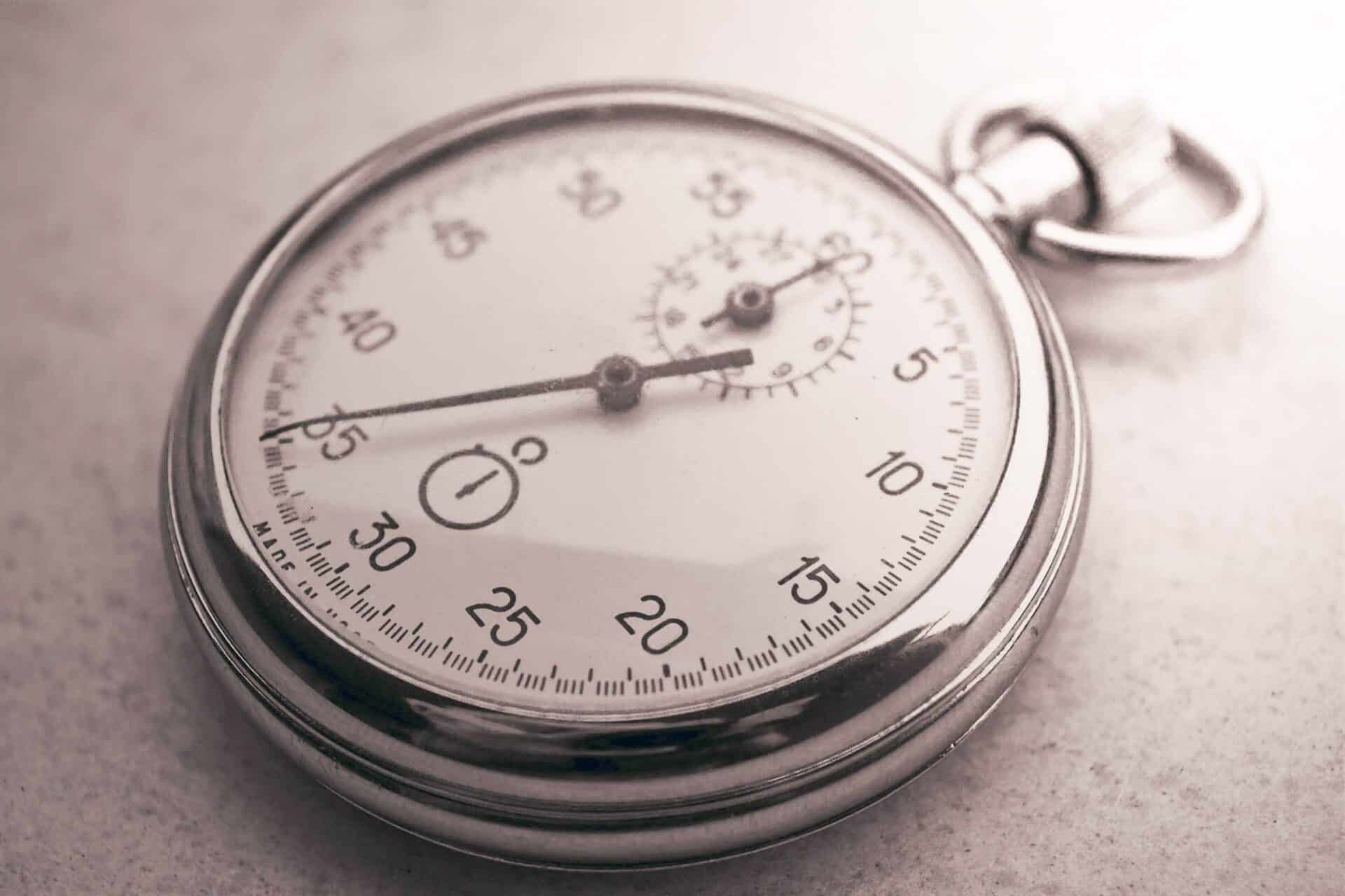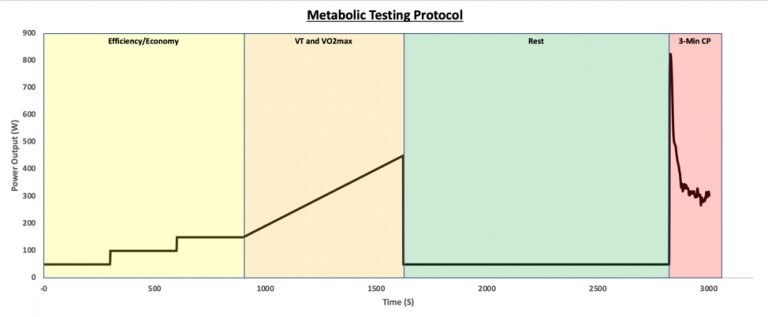One Test to determine Efficiency, Thresholds, and VO2max
Introduction. The three major predictors of endurance performance are maximal oxygen consumption (VO2max), fatigue thresholds (e.g., ventilatory and/or critical power), and efficiency or economy of movement. Over the last few blog posts a description of the testing, and analysis of each variable has been completed. In this post a detailed outline of how to combineContinue reading "One Test to determine Efficiency, Thresholds, and VO2max"

Introduction. The three major predictors of endurance performance are maximal oxygen consumption (VO2max), fatigue thresholds (e.g., ventilatory and/or critical power), and efficiency or economy of movement. Over the last few blog posts a description of the testing, and analysis of each variable has been completed. In this post a detailed outline of how to combine all of the previous tests into one test, that can be completed in an hour, will be discussed.
Materials and Methods. For the following test, no new equipment will be needed that hasn’t been seen before. However, as will be discussed later, some of the testing variables can certainly be augmented by the introduction of new cutting edge products such as near-infrared spectroscopy (NIRS) devices like Moxy monitor. Therefore in order to test all of the above variables you will need:
- A metabolic device (e.g., VO2 Master Pro, Parvo TrueOne, etc.). Ideally, this device will be portable so testing can occur in an environment reflective of the athletes racing/competition conditions.
- Heart rate monitor
- Adjustable speed or power meter (e.g., a bike, treadmill, or rowing machine). Whichever device is used should be based on the movement that is most commonly seen by the athlete.
Part 1. Now combine all of the previously discussed methods. This means that the test will start with 2-3, 5-7.5 minute submaximal stages (preferably cadence controlled, so comparisons can be made between different tests). After the final submaximal stage is concluded, if cycling increase the wattage by 25 watts per minute until the person cannot keep RPMs > 55. If running, change the speed and or grade (if on a treadmill) every minute until the person stops. For both of these scenarios the test should be at least 8 minutes long but no longer than 12 minutes. This means that for both running and cycling the researcher should adjust starting wattage/speed and increases to have the participant being completely done around the 10 minute mark.
Part 2. After part one of the maximal exercise test have the person lightly jog or cycle for 10-30 minutes (depending on how the participant feels). The last step is to have the participant complete a 3 minute critical power test. This test is a time efficient means of confirming VO2mas was truly reached, as well as measuring/confirming threshold values. For this test have the participant run or cycle as hard as they can for 3 minutes. For cycling the participant should be spinning at an RPM that is similar to the RPMs they would be racing at. For running, have the participant start at a speed that is slightly lower than the speed they reached during Part and have them adjust the speed up or down to get as far as they possibly can during the three minutes.

Summary. Altogether, this test should take about 60 minutes from start to finish and the power output trace should look something like that in figure 1, below. This test is challenging and designed to push the athlete pretty hard but most well-trained endurance athletes should be able to handle the workload and intensity. For less-trained individuals just doing part 1 should be sufficient for gaining enough data to inform training. Overall, this one hour block of testing is a very comprehensive test, when completed over time (every 8 weeks or so), will give coaches the data necessary to track changes to an athletes’ fitness in great detail.
